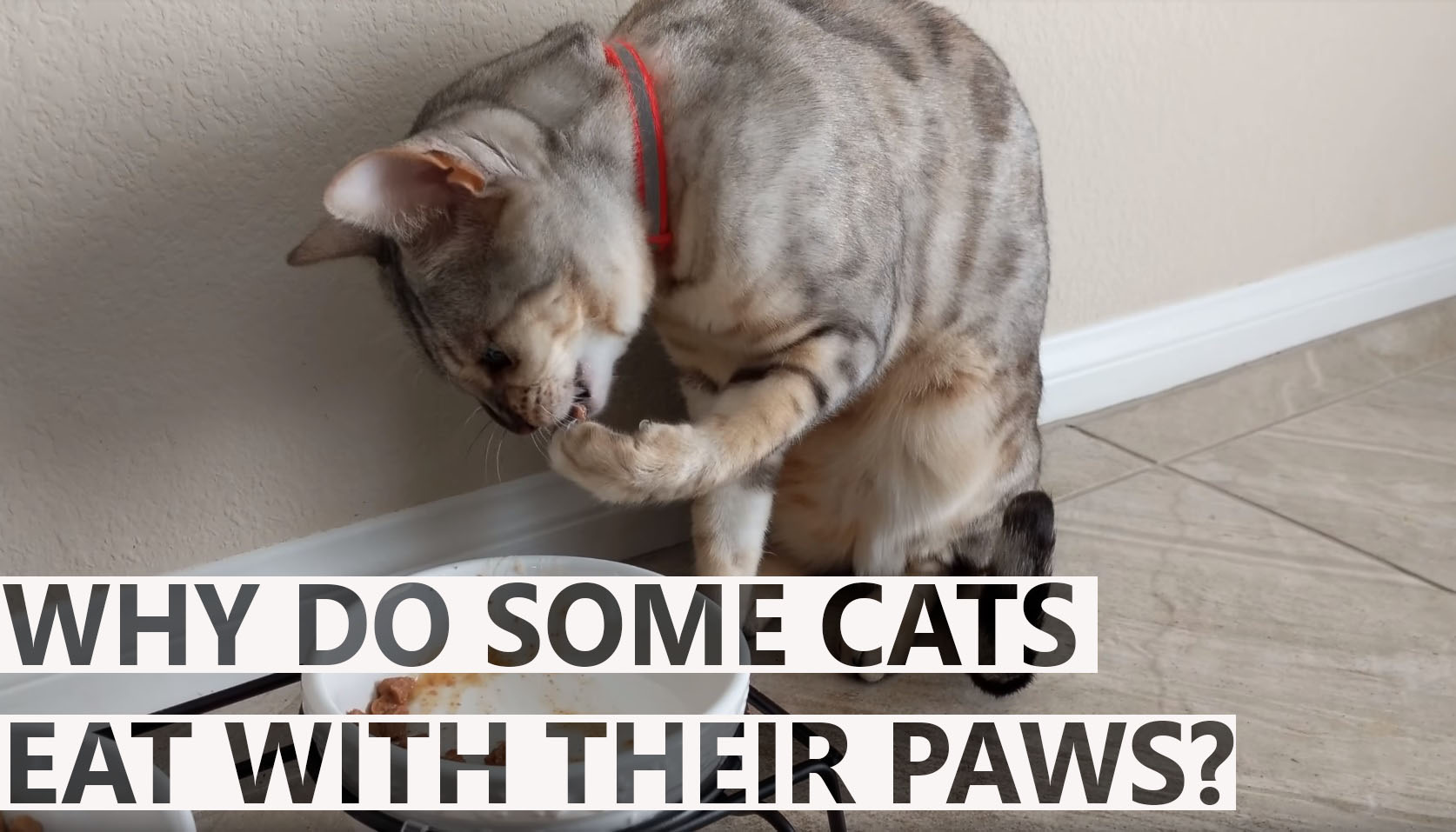Why in the world would a cat not just behave like a cat?
More...
It is not very rare to witness your cat eating food with its paws right from the bowl. You would assume that it is going to be a one-time occurrence and possibly fade away with time...but no!
Your cat keeps scooping the food out with its paws each time you place some food in its bowl. Suddenly, your curiosity streak sets in and you venture out asking friends if their cats do the same thing.
You then hear all sorts of answers from good table manners to dental problems, everyone seems to have an explanation.
Normally, cats are supposed to bend down and reach for the food in their bowl using their mouths with their paws well positioned on the floor.
However, some cats change tactics and opt to first scoop the food and then put it in their mouth.
This could be caused by any of the following reasons;
1. A Feeding Bowl That Is Too Deep or Small
Cats come in all shapes and sizes.
One bowl size may be good for one cat but too deep or small for another.
Instead of a cat squeezing their big fluffy heads into a tiny bowl to eat, they find it practical to reach out and instead use their paws as spoons.
2. Poor Location Of The Bowl
Cats do not like surprises. They always prefer to be alert whether they are eating, sleeping, or resting. Most cat owners set their pets’ food bowls in a hidden corner where it would probably be easier to clean.
However, if a cat doesn’t feel completely alert while feeding in this location, they may result in finding other ways to maneuver.
By using their paws to eat, the cat’s eyes and ears are in a better position to remain alert and yet feed simultaneously.
3. High Sensitivity
Cats use their whiskers to sense movement or vibrations around them. You’ll even notice that they don’t like that part of their face touched very often.

When a cat has long whiskers and is eating from an average sized bowl but yet the whiskers still rub on the sides, it can be very uncomfortable.
To escape the discomfort, the cat may prefer to use its front paws to eat.
4. Comfort
Cats may have originated from the wild but sharing their lives with humans for centuries have left them adopting certain human behavior.
Some cats just find it more comfortable to reach for food with their paws and put it in their mouth just like their owners do.
5. Hunting Practice
Domestication of cats have left some cats completely unable to hunt for prey. They may lack the confidence that is necessary for hunting but their natural instincts still ring loud in their heads.
This explains why despite you placing manufactured cat food in a bowl, your cat would poke or play with the food using its paws as if it were poking a mouse and then eating it.
This kind of behavior can be seen in younger felines but not so much in an older cat that may have had some prior hunting experience.
6. Feeling For Texture
Cat paws are very sensitive and flexible which is comparable to our human hands.
Just like we use our hands to feel textures and read temperature, so do cats.
A cat may use its paws to knead and feel the temperature of the food in its bowl.
This is witnessed especially when you are feeding your cat a new type of food.
If you notice your cat behaving in such a way, try and identify the problem and adjust accordingly. Face each cat individually like you would another human being.
Different cats may live in the same house but they still have their own unique likes and dislikes. Alternatively, if you investigate and find out that your cat is still using its paws to eat, then let your cat be.
Cats are naturally curious animals, they do not just pounce on food like dogs would, but they take their time to evaluate the situation and read their surroundings before they start feeding.



Love the info. But what kind of food is the healthiest food and what brand and wet / dry please. My son just bought a kitten Bengal and adores him🦋😘🌸
Hi Karen. Congrats to your son on his new Bengal. I would let your vet provide you advice on food best for your new Bengal. Both my Bengals have IBS so, they have been on a prescribed gastrointestinal food both dry and wet. Hope that helps. 🙂